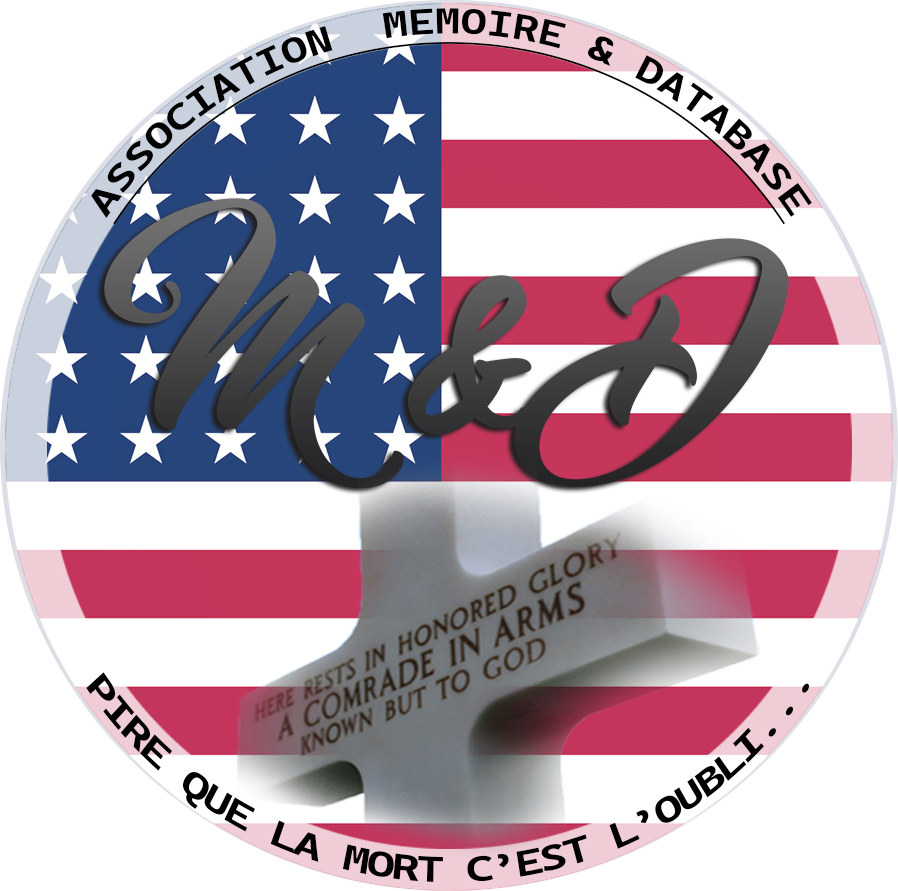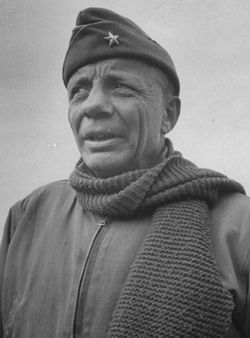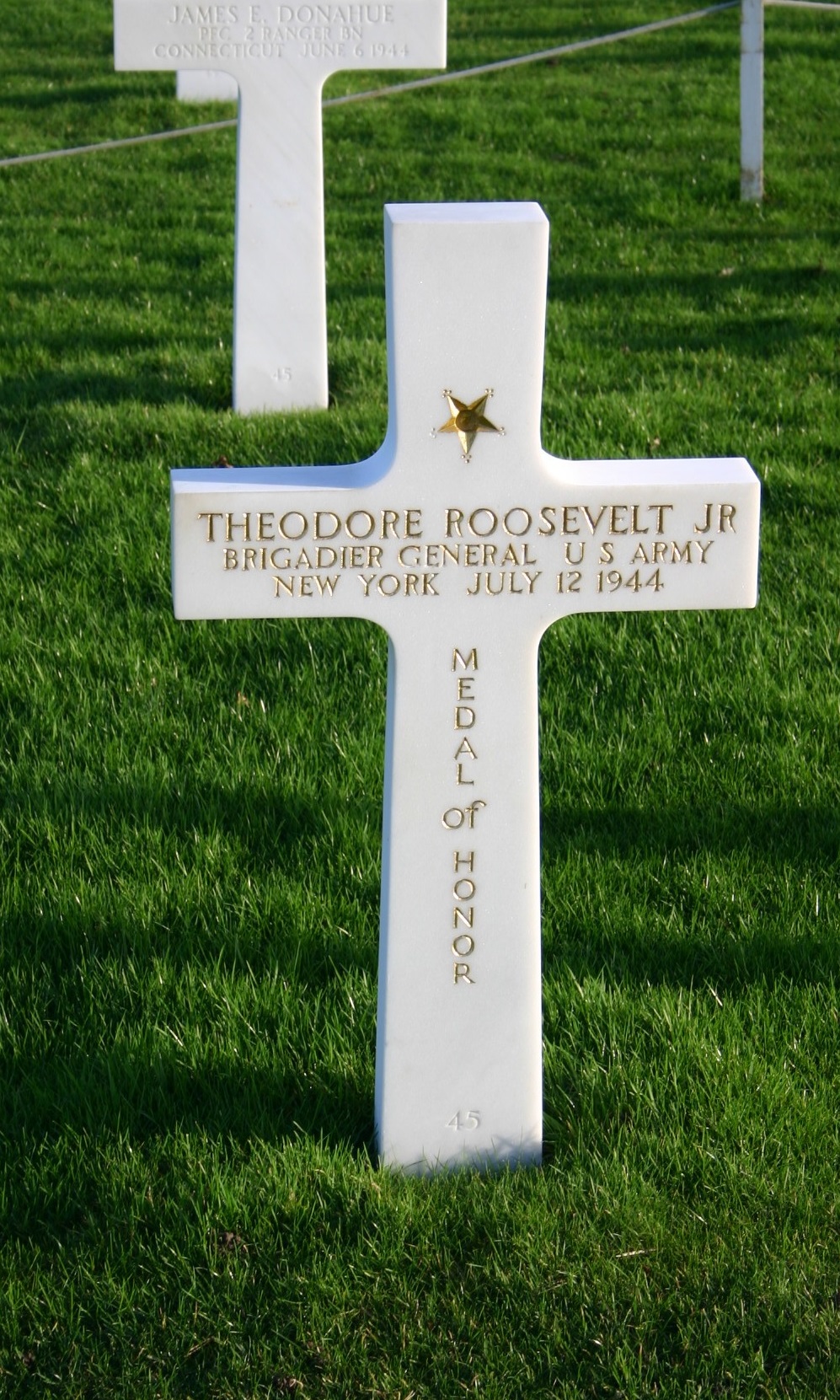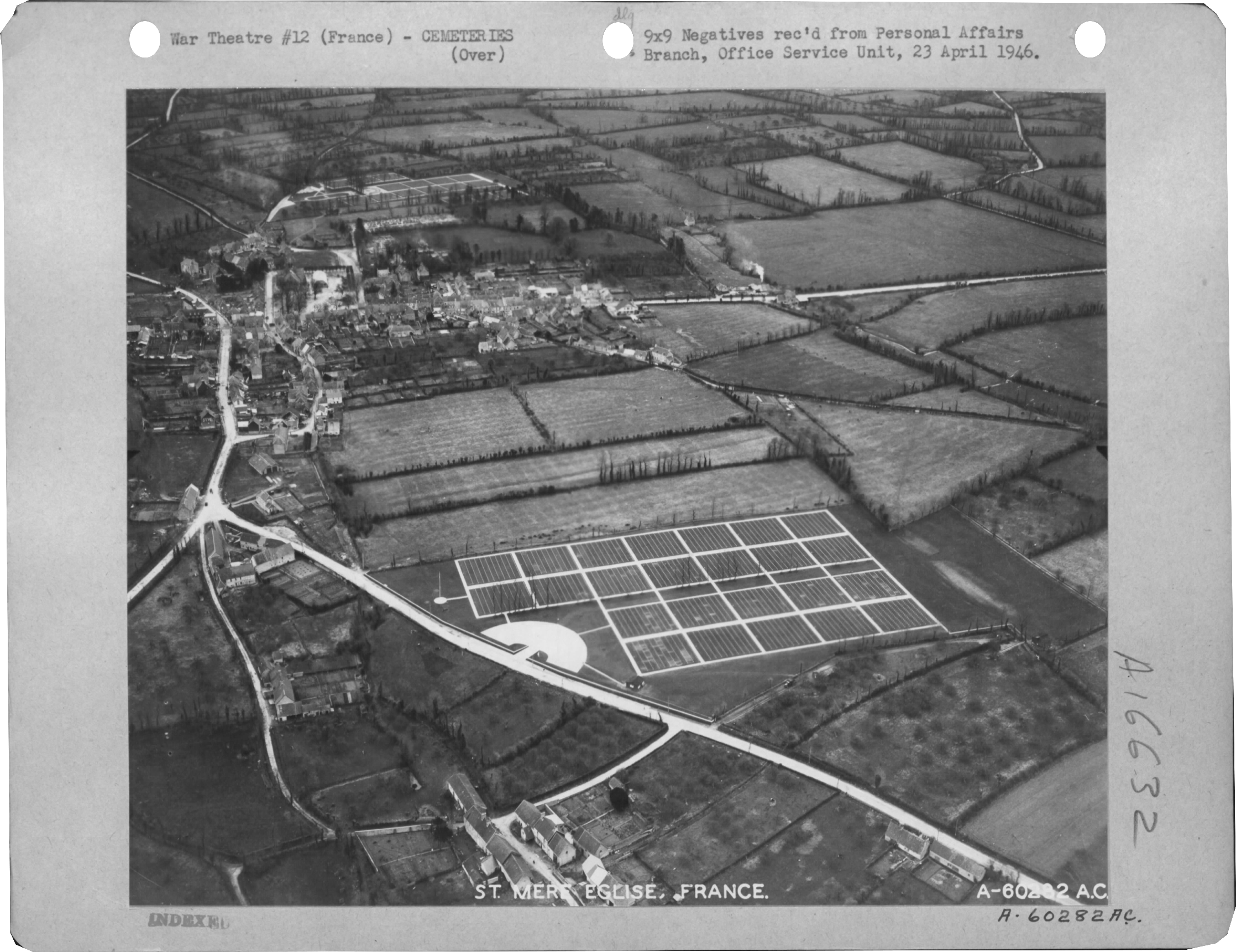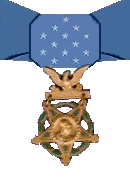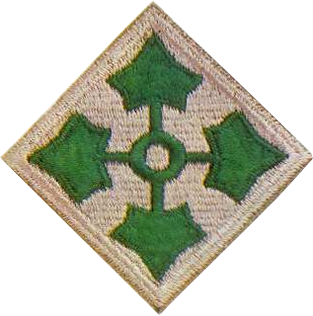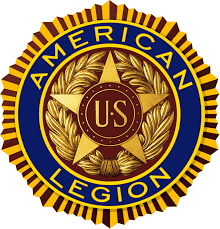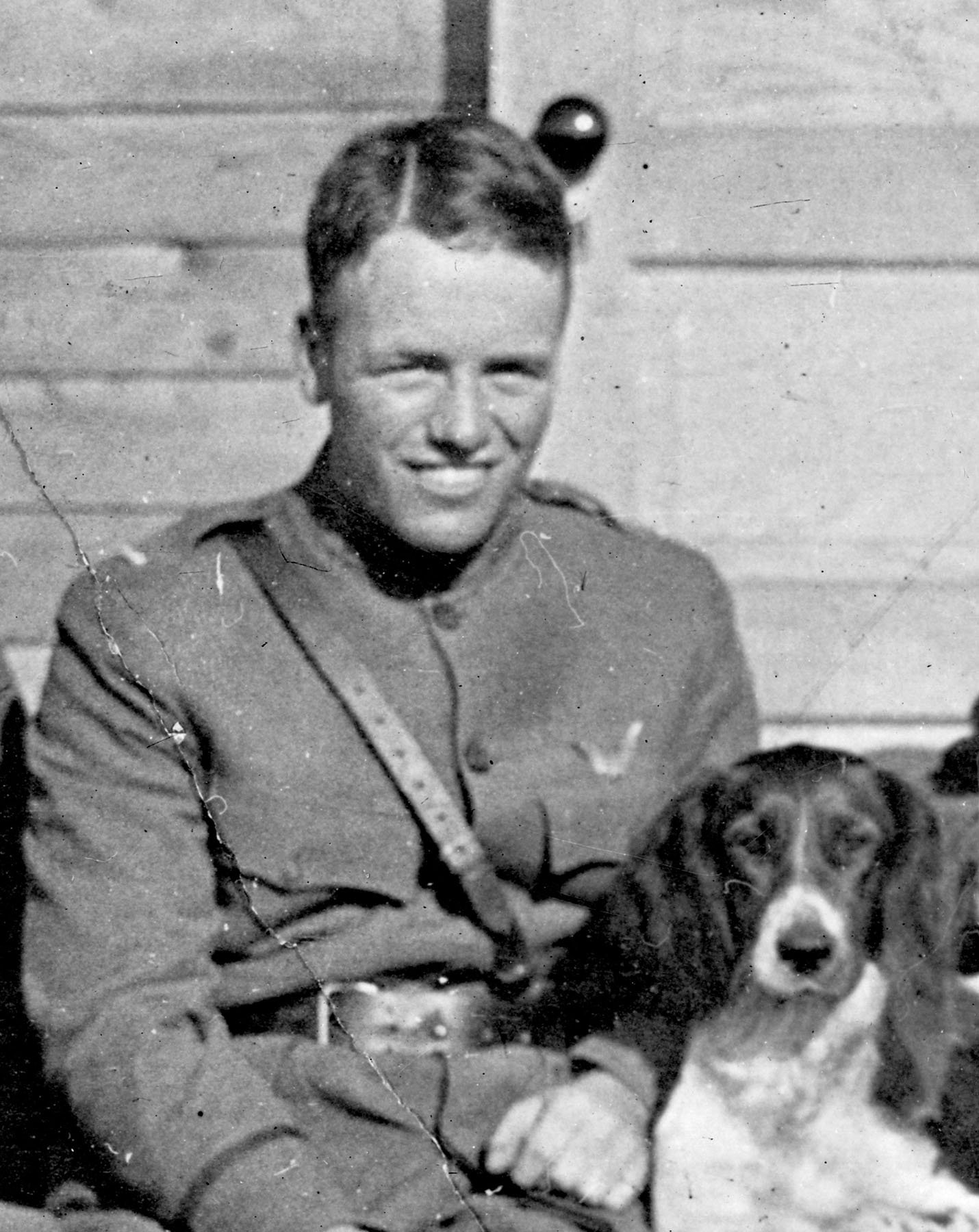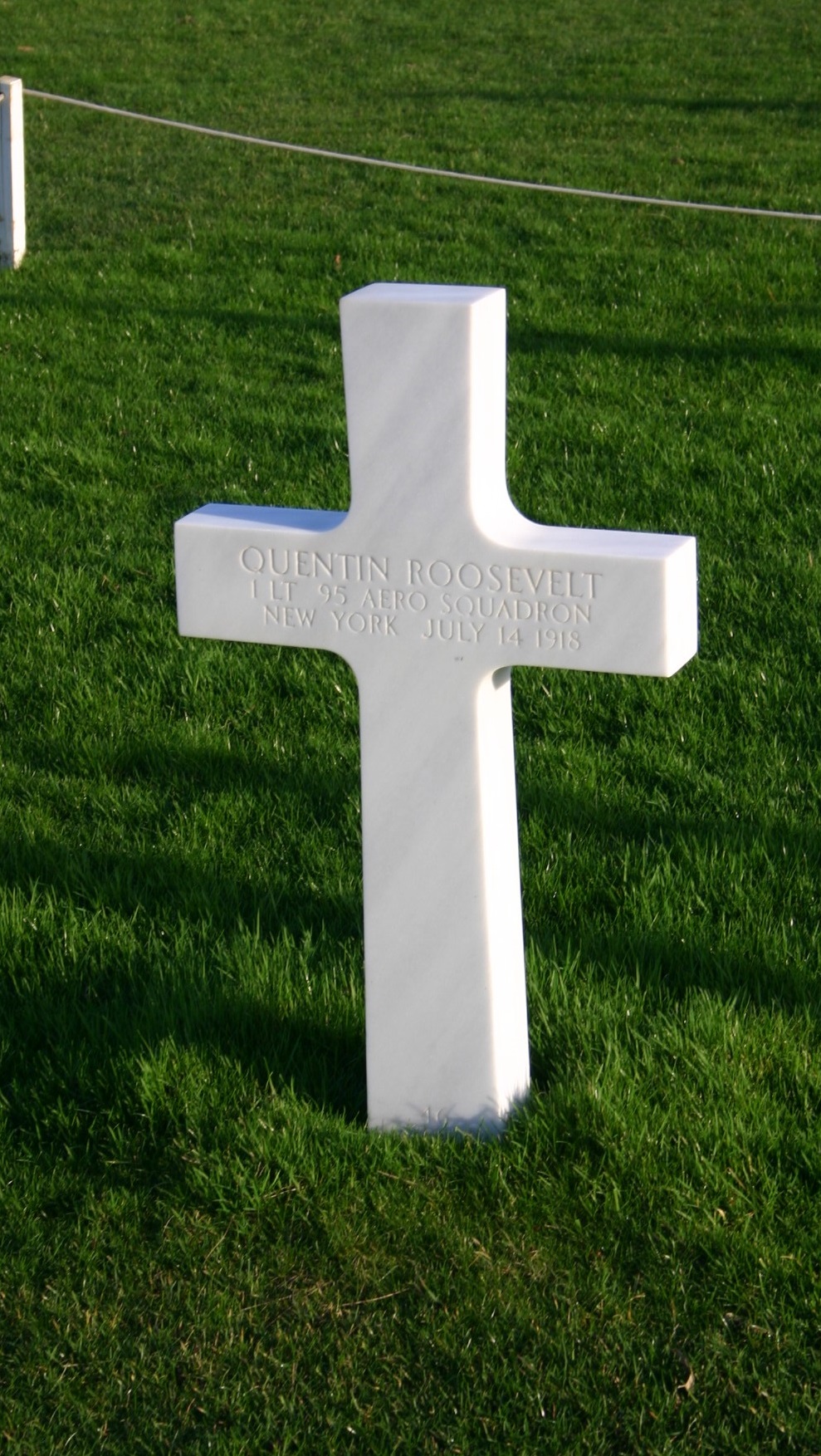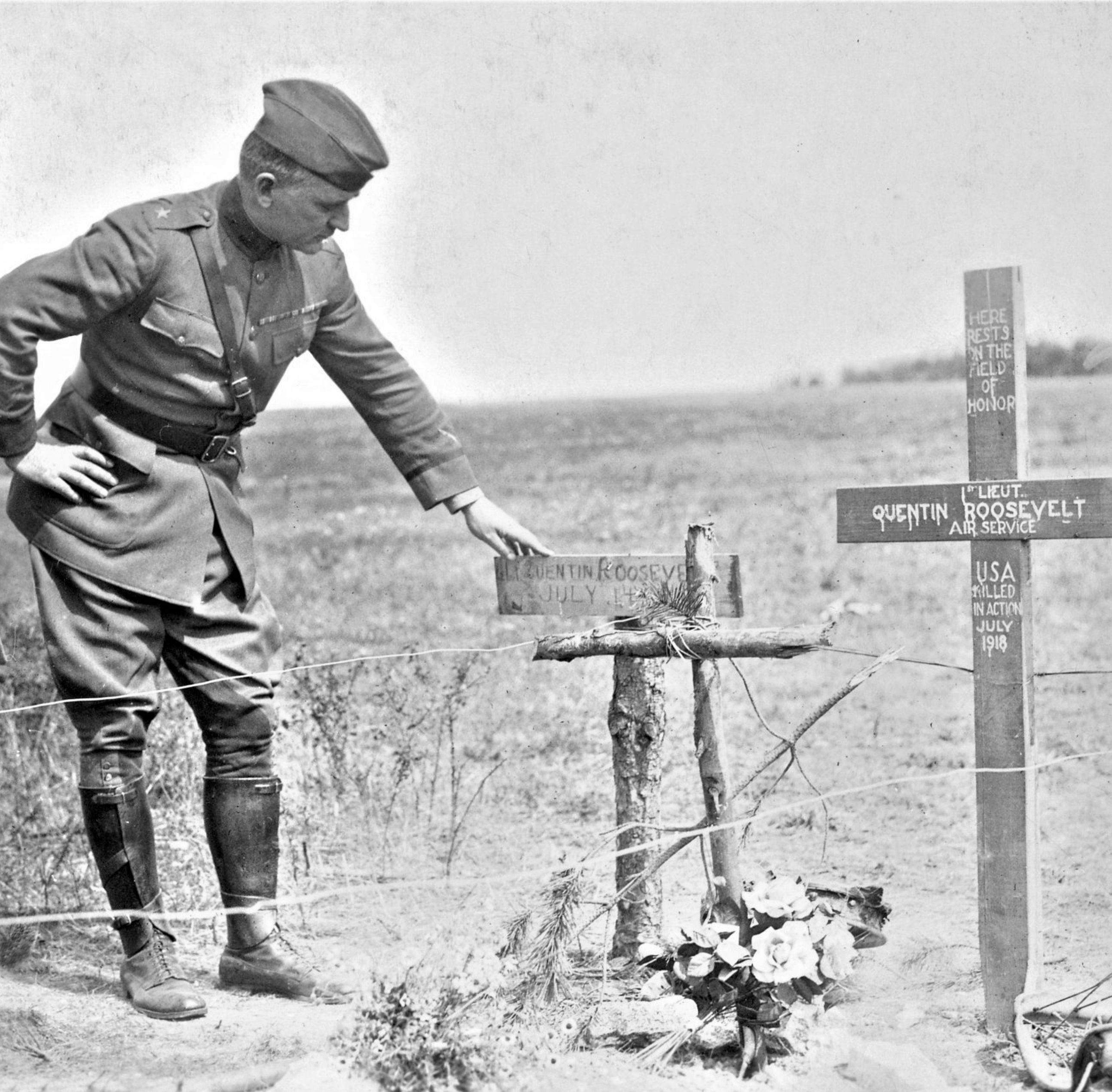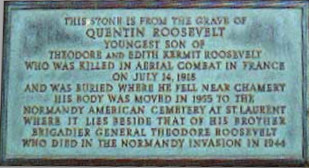|
Theodore ROOSEVELT Jr
| ||||||||||||||||||||||||
|---|---|---|---|---|---|---|---|---|---|---|---|---|---|---|---|---|---|---|---|---|---|---|---|---|
|
Source : Ron Moody
| ||||||||||||||||||||||||
| NUMBER OF SERVICE | O-139726 | |||||||||||||||||||||||
| AGE | 56 yo | |||||||||||||||||||||||
| DATE OF BIRTH | 13 September 1887 Cove Neck, Nassau Country | |||||||||||||||||||||||
| ENLISTMENT STATE | NEW YORK | |||||||||||||||||||||||
| FAMILY |
Spouse : Eleanor Butler Alexander Roosevelt Children : Grace Green, Theodore, Cornelius & Quentin Parents : Theodore & Edith Kermit Carow ROOSEVELT Siblings : Kermit, Ethel Carow, Archibald & Quentin Half Siblings : Alice Lee | |||||||||||||||||||||||
| RANK | Brigadier General | |||||||||||||||||||||||
| FONCTION | Brigade commander | |||||||||||||||||||||||
| JOB BEFORE ENLISTEMENT |  | |||||||||||||||||||||||
| DATE of ENLISTEMENT | ||||||||||||||||||||||||
| DIVISION | 4th Infantry Division | |||||||||||||||||||||||
| ARMY | US Army | |||||||||||||||||||||||
| DATE OF DEATH | 12 July 1944 |
Source : F Lavernhe | ||||||||||||||||||||||
| STATUS | KIA | |||||||||||||||||||||||
| PLACE OF DEATH | Méautis | |||||||||||||||||||||||
| CEMETERY TEMPORARY |
CEMTERY TEMPORARY of Ste Mère Eglise #2 N°3586
| |||||||||||||||||||||||
| CEMETERY | NORMANDY AMERICAN CEMETERY of Colleville | |||||||||||||||||||||||
| GRAVE |
| |||||||||||||||||||||||
| DECORATION |
| |||||||||||||||||||||||
| ||||||||||||||||||||||||
| STORY | ||||||||||||||||||||||||
| Theodore Jr. studied at Harvard and graduated in 1909. | ||||||||||||||||||||||||
WW1 |
He participated in the summer training camp in Plattsburg in 1915 of General WOOD which allowed him to enter the AEF with the rank of major. Commander of the 26th infantry regiment integrated into the First Division, he took part in many battles.
He was wounded at the Battle of Château-Thierry (1918). He received the Distinguished Service Cross (United States), the Silver Star and was introduced knight of the Legion of Honor on March 16, 1919 just before his return to the United States. | |||||||||||||||||||||||
|
Back home he was one of the founders of the American Legion.
He continued to do his reserve sessions, which made him eligible for active service during World War II. He was successful in business as a member of an investment bank and had a personal fortune in the 1920s. In 1919, he was elected to the assembly of the State of New York, became Assistant Secretary of State under Warren Gamaliel Harding responsible for the supply of fuel to the Navy from 1921 to 1924. Governor of Puerto Rico from 1929 to 1932, under the presidency of Herbert Hoover, he defends the local culture and works to reduce poverty. Still under the presidency of Herbert HOOVER, he was also Governor General of the Philippines in 1932 and 1933. He then returned to the United States and was President of the American Express Company, Vice President of Doubleday Books and was a member of many charities such as Irving BERLIN which manages the income of God Bless America. | ||||||||||||||||||||||||
WW2 |
His behavior and his presence during the African campaign make him extremely appreciated by his men. His hierarchy considers this complicity harmful to the maintenance of order within the troops: ROOSEVELT is then sent to England to participate in the preparation of the Overlord plan alongside Major General BARTON of the 4th American infantry division. A few days before D-Day, ROOSEVELT, unable to be confined to an office any longer, wrote an official letter to General BARTON presenting his request to be able to accompany the men of the division when they landed on the beach. General ROOSEVELT's argument is as follows: “The strengths and skills of the first elements reaching the beach can be decisive in the success of the operation: with troops being fired for the first time, the behavior of the entire division will be influenced by the attitude of the first ones engaged. It should be considered that precise information, in which you can have complete confidence, of the situation must be available throughout the progress of the operations carried out on the beach. The men who have become accustomed to seeing me by their side throughout their training have a right to expect the same to be true during this operation. I think I can contribute to these objectives by accompanying the first wave of assault. Also, I personally know the officers and men of these units and I think it would be good if they felt I was with them. " General BARTON reluctantly approved the request, thinking that he would never see ROOSEVELT alive again. It was therefore with the help of a cane to overcome the pain of a strong arthritis that General ROOSEVELT landed at the head of his men on June 6, 1944 on the beach of Utah Beach. The events which followed gave reason for the choice of General BARTON. Indeed, the landing barges having drifted sharply during their approach, ROOSEVELT and its first wave of assault found themselves 1 mile from the planned landing place. While remaining calm and reassuring his troops, he immediately sent a reconnaissance to ascertain the situation. Believing that in the end the terrain was appropriate, he said: “We start the war here! ". Enormous composure and undeniable courage allowed the 4th Division to achieve its objective: to rally the airborne troops responsible for holding the western bridgehead of the Overlord plan. Grave of General ROOSEVELT in the American cemetery of Colleville-sur-Mer. ROOSEVELT died of a heart attack on July 12, 1944 in Méautis, at the end of a very trying day of German counter-attacks during the Battle of Normandy. Initially recommended by General BARTON to the Distinguished Service Cross, the decoration was transformed, posthumously, on September 28, 1944, into the highest American military distinction, the Medal of Honor. He was decorated with the Croix de Guerre 1939-1945. As he had wished, his body rests with his men, facing the sea, in the American cemetery of Colleville-sur-Mer (Normandy), alongside his brother Quentin, shot down by two German fighters on July 14, 1918 ( the body of the latter, initially buried in Chamery, was brought back to Colleville alongside his brother), square D, last row. | |||||||||||||||||||||||
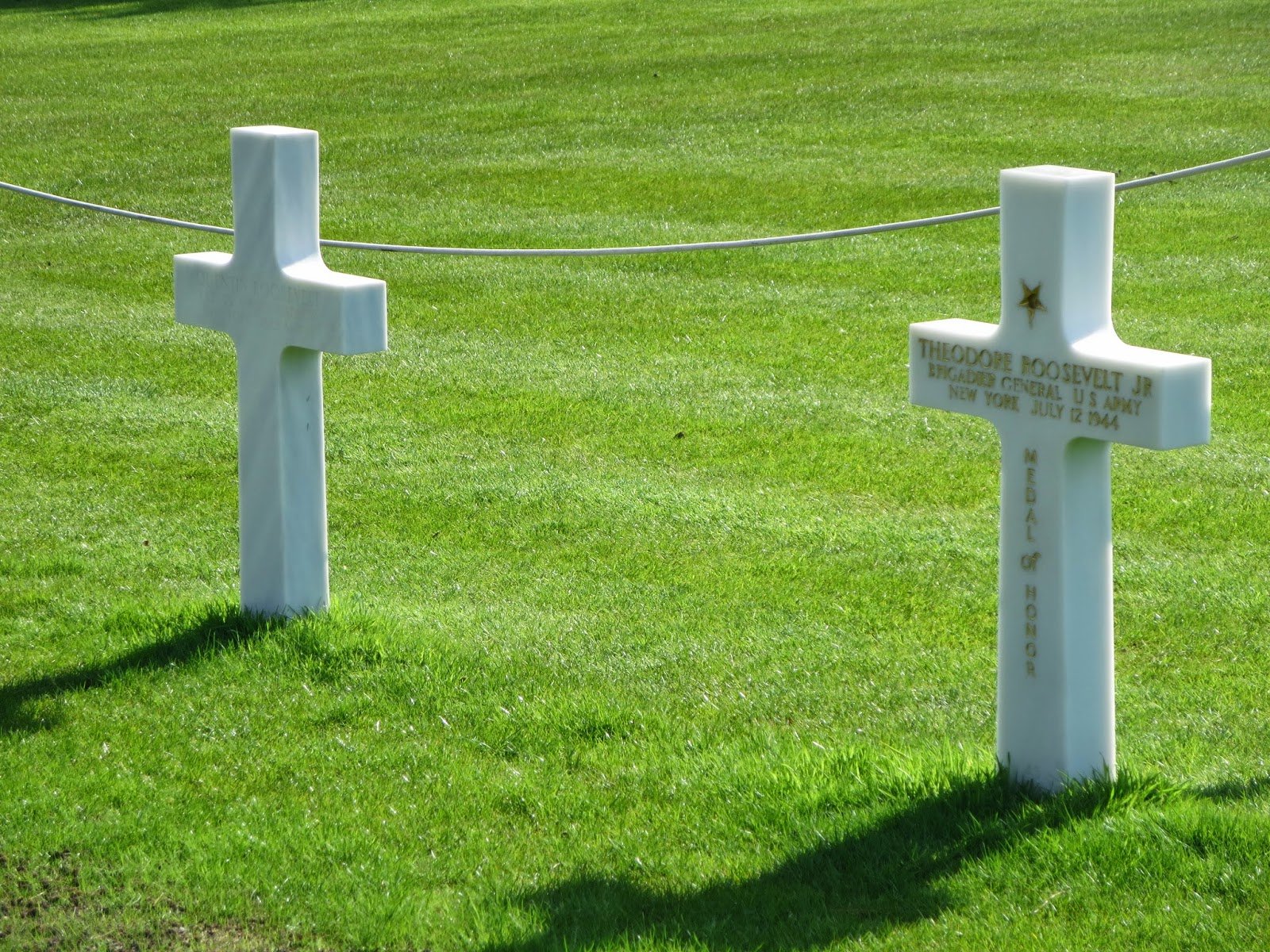 | ||||||||||||||||||||||||
|
On July 14, 1944, Private Sidney Gutelewitz noticed a lot of activity near a cemetery. He crossed the road and saw generals, 10 in all, some with three stars. He recognized PATTON and BRADLEY leading the procession. Equipped with his camera, he began to photograph the ceremony without knowing who was buried. But he knew that with so many generals present, "he was not a simple soldier." He took 26 photos on his Leica. Then he joined his unit and was later transferred to follow and photograph General Patrick TIMBERLAKE. GUTELEWITZ returned to American soil after 22 months of service, leaving Marseille and carrying the negatives in a sports bag. Once in the United States, he continued his career as a photographer, married, and moved to California in 1946 to start a new life. For years, the negatives, still rolled up in their boxes, sat in a closet at her Woodland Hills home. After his retirement he developed and showed the proofs to friends at the West Valley Milken Jewish Center and one of them suggested that he write to the Department of Defense, which he did. A response was sent to him in 1997 by the United States Army Center of Military History. As it turned out, the ceremony he photographed on July 13, 1944 was the funeral of Theodore Roosevelt Jr, eldest son of President Theodore ROOSEVELT and Edith ROOSEVELT.During World War II, Roosevelt suffered from health problems (arthritis) mainly due to injuries from World War I. On July 12, 1944, at the age of 56, he died of a heart attack while on duty in Normandy. The funeral took place the next day. He is buried next to his brother Quentin, a World War I pilot shot down behind enemy lines in 1918. Gutell's photos are now part of the collection of the Center for Military History. Source : MVCG Indian Head | 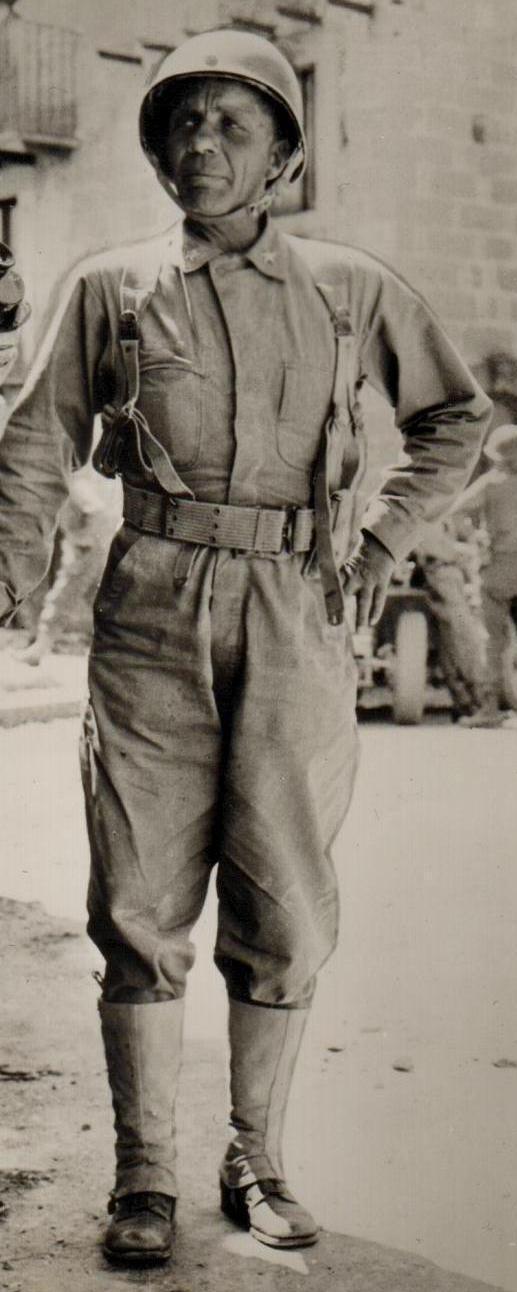 | |||||||||||||||||||||||
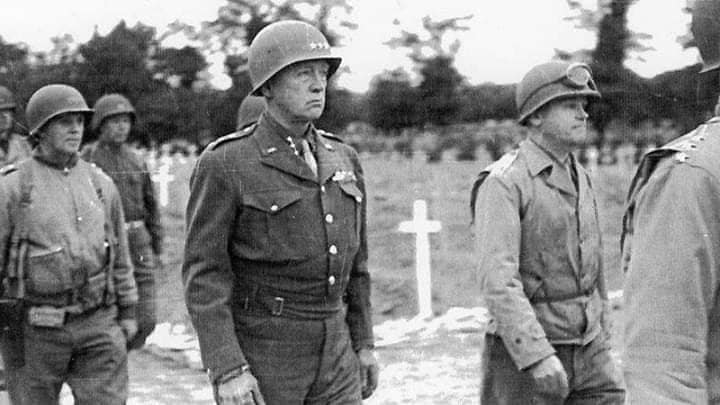 | 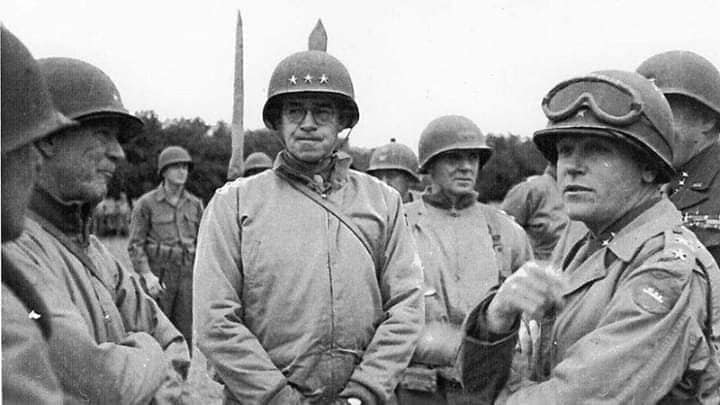 | |||||||||||||||||||||||
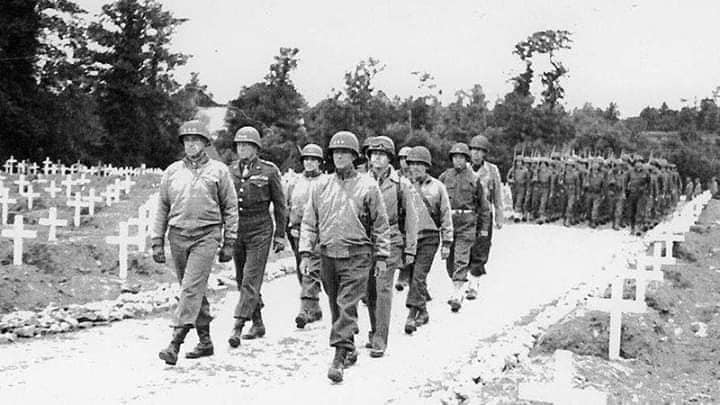 | 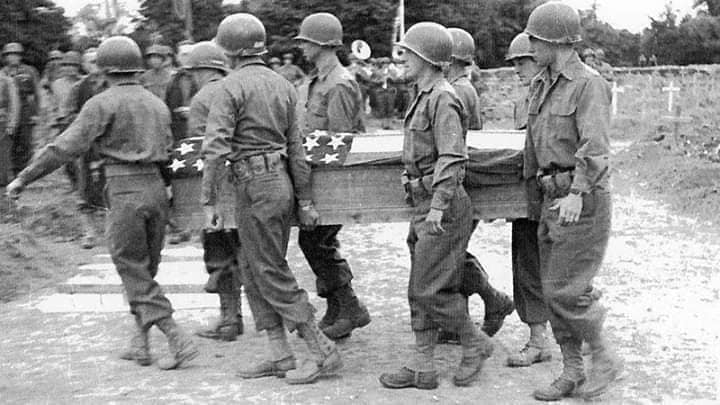 | |||||||||||||||||||||||
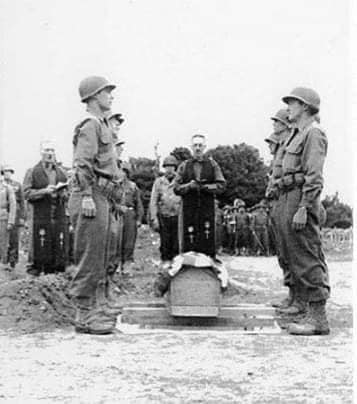 | 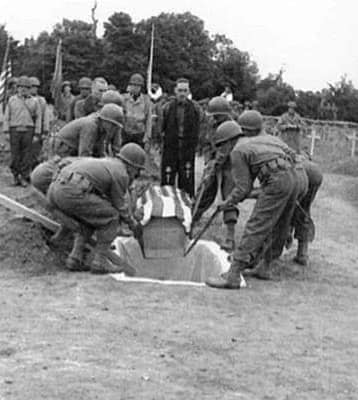 | |||||||||||||||||||||||
| Source : Sidney GUTELEWITZ & MVCG Indian Head | ||||||||||||||||||||||||
Activated/Activé |
Normandy/Normandie |
| 1 Jun 1940 | Days of Combat/Jour de Combat 299 |
| Casualties/Victimes 22 660 | |
Entered Combat/Entré au combat |
|
| 6 Jun 44 D-Day | |
|
Commanding Generals/Commandants généraux Maj. Gen. Walter E. Prosser (Jun 40 - Oct 40) |
Campaigns/CampagnesNormandy (6 Jun 44 - 24 Jul 44)
|
PLAN DE ROUTE DE LA CAMPAGNE - CAMPAIGN ROUTE MAP |
|
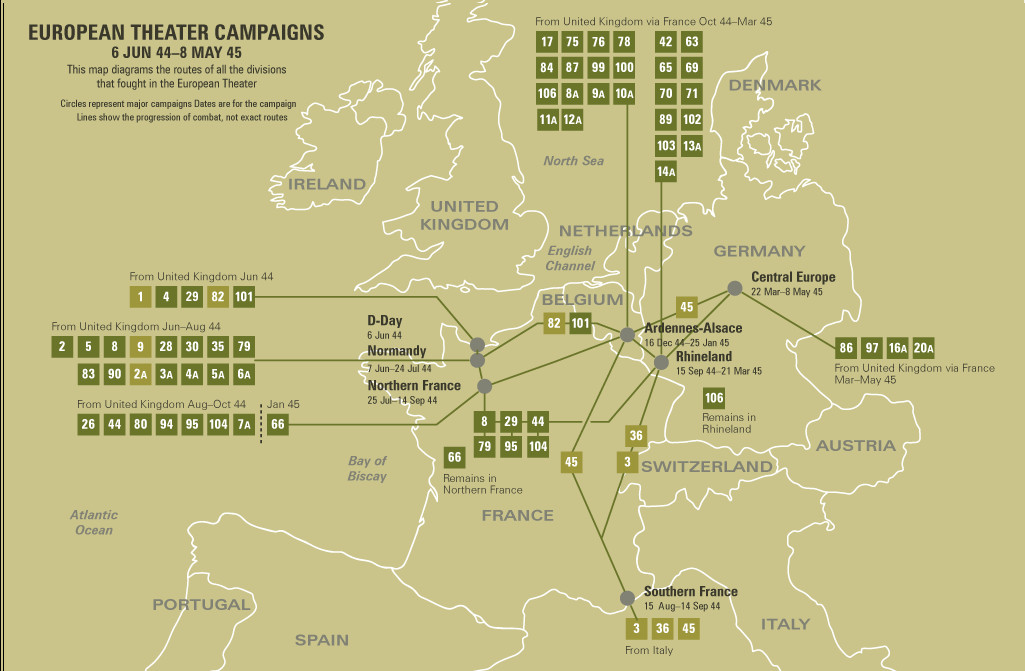 |
|
DIVISION CHRONICLEThe 8th Infantry Regiment of the 4th Division was one of the first Allied units to hit the beaches at Normandy on D-day, 6 June 1944. Relieving the isolated 82nd Airborne Division at Ste. Mere Eglise, the 4th cleared the Cotentin peninsula and took part in the capture of Cherbourg, 25 June. After taking part in the fighting near Periers, 6-12 July,, the Division broke through the left flank of the German Seventh Army, helped stem the German drive toward Avranches, and by the end of August had moved to Paris, assisting the French in the liberation of their capital. The 4th then moved into Belgium through Houffalize to attack the Siegfried Line at Schnee Eifel, 14 September, and made several penetrations. Slow progress into Germany continued in October, and by 6 November the Division reached the Hurtgen Forest, where a severe engagement took place until early December. It then shifted to Luxembourg, only to meet the German winter offensive head-on, 16 December 1944. Although its lines were dented, it managed to hold the Germans at Dickweiler and Osweiler, and, counterattacking in January across the Sauer, overran German positions in Fouhren and Vianden. Halted at the Prum in February by heavy enemy resistance, the Division finally crossed 28 February near Olzheim, and raced on across the Kyll, 7 March. After a short rest, the 4th moved across the Rhine 29 March at Worms, attacked and secured Wurzburg and by 3 April had established a bridgehead across the Main at Ochsenfurt. Speeding southeast across Bavaria, the Division had reached Miesbach on the Isar, 2 May 1945, when it was relieved and placed on occupation duty. |
CHRONIQUE DE DIVISIONLe 8e régiment d'infanterie de la 4e division fut l'une des premières unités alliées à débarquer sur les plages de Normandie le 6 juin 1944, jour du débarquement. Soulager la 82nd Airborne Division isolée de Ste. Mère Eglise, le 4e défricha la presqu'île du Cotentin et participa à la prise de Cherbourg le 25 juin. Après avoir pris part aux combats près de Periers, du 6 au 12 juillet, la Division a franchi le flanc gauche de la Septième armée allemande, aidé à endiguer la route allemande vers Avranches et, à la fin du mois d'août, s'est installée à Paris, aidant les Français. dans la libération de leur capitale. Le 4e s'est ensuite déplacé en Belgique par Houffalize pour attaquer la ligne Siegfried à Schnee Eifel, le 14 septembre, et a fait plusieurs pénétrations. Les progrès lents en Allemagne se sont poursuivis en octobre et, le 6 novembre, la division a atteint la forêt de Hurtgen, où un engagement sévère a eu lieu jusqu'au début du mois de décembre. Il s'est ensuite déplacé vers le Luxembourg, seulement pour affronter l'offensive allemande d'hiver, le 16 décembre 1944. Bien que ses lignes aient été bosselées, il a réussi à tenir les Allemands à Dickweiler et Osweiler et, contre-attaquant en janvier à travers la Sauer à Fouhren et Vianden. Arrêtée au Prum en février par une forte résistance ennemie, la Division a finalement franchi le 28 février près d'Olzheim et a couru à travers le Kyll, le 7 mars. Après un court repos, le 4 mars traversa le Rhin à Worms, attaqua et sécurisa Wurzburg le 29 mars et, le 3 avril, il établit une tête de pont sur le Main à Ochsenfurt. Accélérant le sud-est à travers la Bavière, la division avait atteint Miesbach sur l'Isar, le 2 mai 1945, quand elle fut relevée et placée en devoir d'occupation. |
| SOURCE INFORMATION & PHOTO | Armydivs.squarespace.com |
|---|
| Brother's Theodore Jr |
Quentin ROOSEVELT
| ||||||
|---|---|---|---|---|---|---|---|
| AGE | 20 yo |
Source : Mike Serpa | |||||
| DATE OF BIRTH | 19 Novembre 1897 Washington | ||||||
| STATE | District of COLUMBIA | ||||||
| FAMILY |
Parents : Theodore & Edith Kermit Carow ROOSEVELT Siblings : Kermit, Ethel Carow, Archibald & Roosevelt Half Siblings : Alice Lee | ||||||
| RANK | First Lieutenant | ||||||
| DATE OF DEATH | 14 July 1918 |  | |||||
| STATUS | KIA | ||||||
| PLACE OF DEATH | Chamery, MARNE | ||||||
| CEMETERY |
NORMANDY AMERICAN CEMETERY de Colleville |
Source : F Lavernhe | |||||
| GRAVE |
| ||||||
| DECORATION |
World War I Victory Medal French Croix de Guerre with Palm |
| |||||
|
Source : Jan O. Kolmann Johnsen |
Source : Warrick L. Barrett | 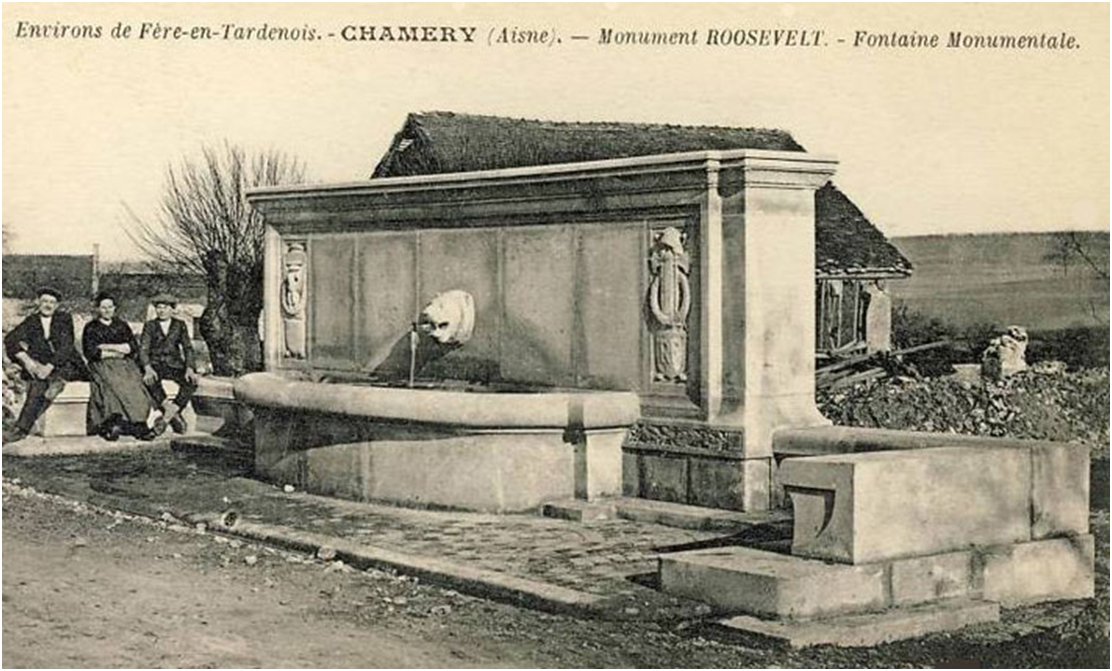 | |||||
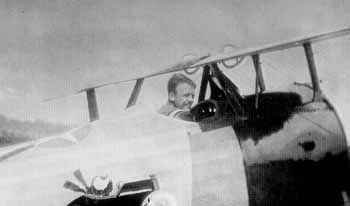 | 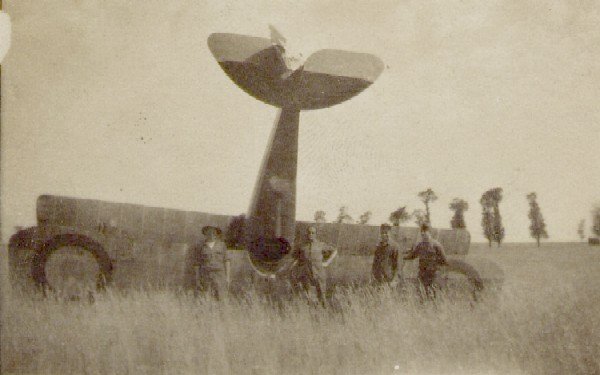 | ||||||
| SOURCE INFORMATION & SOURCE PHOTO | Findagrave.com - Abmc.gov | ||||||
| SOURCE INFORMATION & SOURCE PHOTO | Abmc.gov - Findagrave.com - Abmc.gov - Fr.wikipedia.org - Jérémy Andersen Bö - Jean Paul PITOU |
|---|---|
| PROGRAMMER | Henri, Garrett, Clive, Frédéric & Renaud |


